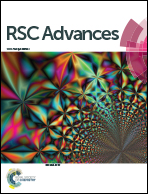An update on hypoallergenicity of peanut and soybean: where are we now?
Abstract
Legumes are considered as one of the major sources of protein as well as providing other vital components of the diet. At the same time, unfortunately, the leguminous crops peanut and soybean also possess food allergens. The majority of legume allergens originate from four protein families and superfamilies ((i) cupins, (ii) prolamins, (iii) profilins and (iv) pathogenic related proteins larger group) and mainly induce IgE-mediated allergenic reactions. The ace strategy to manage the food allergy strictly encompasses avoiding the food allergens. Apart from numerous other alternative approaches for the treatment of food hypersensitivity, elimination of allergens from food crop(s) is a recent direction of research. Two important approaches have been successfully exploited to develop hypoallergenic leguminous crops: (i) lowering or removing the contents of allergy related proteins via germplasm lines screening and (ii) silencing the allergenic proteins encoding native genes via genetic transformation. Both of these strategies have yielded promising results in the production of peanut and soybean cultivars with low levels of allergic proteins. This current review will elaborate the efforts which have been made to develop hypoallergenic peanut and soybean cultivars to manage the legume allergy with a brief concluding debate on the challenges which still need to be addressed before such products could be launched for consumers in the market place.


 Please wait while we load your content...
Please wait while we load your content...